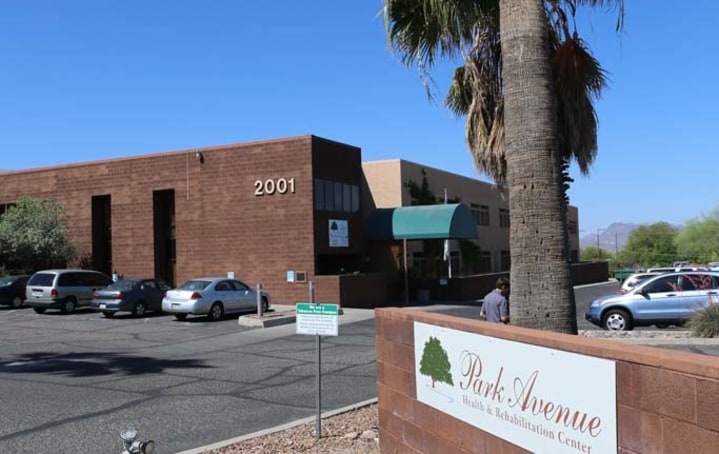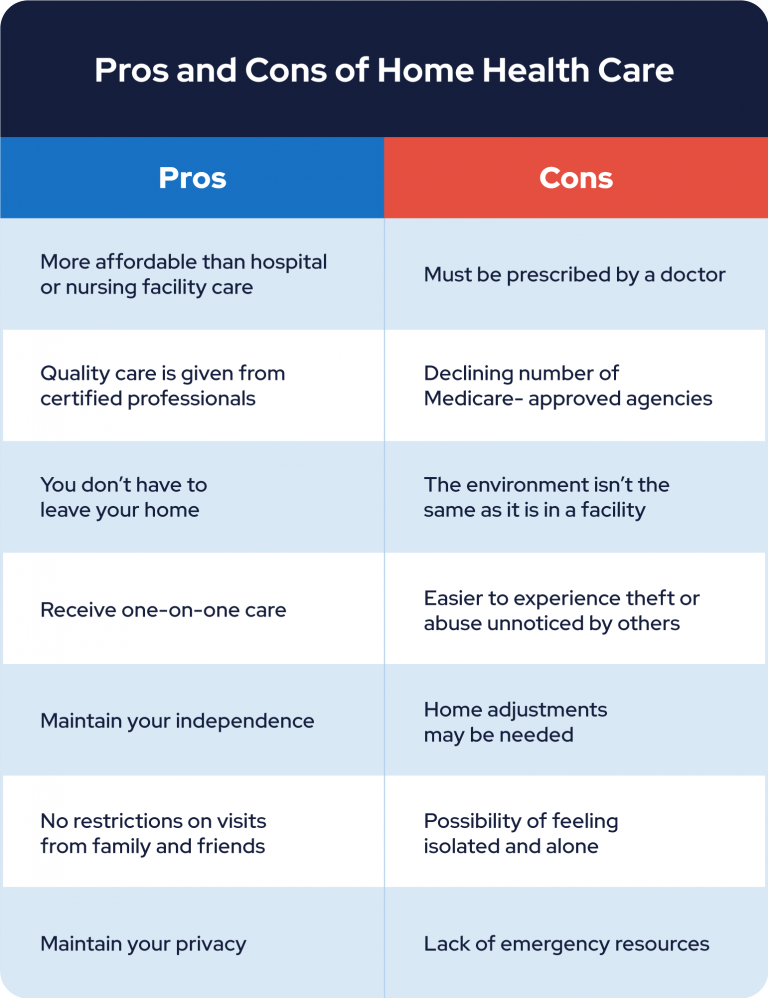The genesis of wellness can be viewed as establishing a foundational state of health. This involves identifying and addressing underlying health deficits before progressing to more advanced interventions. For example, a weight management program might initially focus on improving sleep hygiene and nutritional intake, rather than solely on calorie restriction, to create a stable physiological base.
This initial health focus is critical because it allows individuals to build a robust and sustainable health profile. Neglecting fundamental health needs can undermine subsequent efforts to improve well-being. Historically, a fragmented approach to healthcare has often overlooked this critical preliminary stage, leading to suboptimal outcomes and increased long-term healthcare costs. Prioritizing this foundational approach can lead to significant improvements in overall health outcomes and a more resilient approach to managing chronic conditions.
The subsequent sections will elaborate on practical strategies for identifying individual health baselines and developing personalized plans to optimize wellness from the ground up, focusing on key areas such as nutrition, movement, and mental well-being.
1. Nutrition Basics
Nutrition basics represent a cornerstone of foundational health. Proper nutrition provides the essential building blocks and energy required for cellular function, tissue repair, and physiological processes. Without adequate nutrient intake, the body cannot effectively maintain homeostasis or adapt to stressors. For example, deficiencies in key micronutrients, such as Vitamin D or iron, can directly impair immune function and energy levels, hindering overall health progression. This establishes a clear cause-and-effect relationship where inadequate nutrition impedes the development of a stable health base.
The importance of addressing nutrition at the outset of a health improvement plan lies in its ability to influence subsequent outcomes. A diet rich in essential nutrients supports efficient metabolism, hormone regulation, and cognitive function. Contrastingly, a diet lacking in essential nutrients can lead to chronic inflammation, increased susceptibility to illness, and impaired cognitive performance. Consider the example of an individual attempting to increase their physical activity levels without addressing nutritional deficits: they may experience fatigue, muscle soreness, and an increased risk of injury, thus undermining their fitness goals. This highlights the practical significance of aligning nutritional intake with health aspirations.
In summary, prioritizing nutrition basics is paramount to establishing a solid health foundation. Addressing nutritional deficiencies and promoting a balanced diet enhances physiological function, optimizes adaptation to stress, and supports the successful implementation of broader health strategies. Failing to address this foundational element can impede progress and compromise long-term health outcomes.
2. Movement Foundations
The connection between establishing fundamental movement patterns and initiating a baseline health approach is intrinsic. Deficiencies in basic motor skills and physical capacity directly impact physiological function and overall well-being. Sedentary behavior, characterized by prolonged periods of inactivity, can lead to decreased cardiovascular fitness, muscle atrophy, and impaired metabolic function. Consequently, addressing these movement deficits constitutes a crucial step toward achieving a stable and functional health status. Consider, for example, an individual recovering from an injury; regaining basic mobility and strength is essential before engaging in more advanced rehabilitation exercises. This establishes a practical illustration of the cause-and-effect relationship between movement foundations and health progression.
The importance of movement foundations as a component of initial health improvement stems from its widespread influence on various physiological systems. Regular physical activity promotes cardiovascular health, improves insulin sensitivity, and enhances bone density. Moreover, movement fosters psychological well-being by stimulating the release of endorphins and reducing stress levels. For example, incorporating simple activities such as walking or stretching into a daily routine can yield substantial improvements in mood, energy levels, and overall physical function. This underscores the practical application of movement foundations as a readily accessible and effective strategy for improving health outcomes. Ignoring movement can increase the risk of developing chronic diseases, diminishing quality of life.
In summary, addressing movement limitations and establishing a foundation of regular physical activity is essential for achieving a solid health baseline. The ability to perform fundamental movements efficiently and effectively supports physiological function, reduces the risk of injury, and promotes overall well-being. Challenges may arise in overcoming barriers to physical activity, such as lack of time or motivation. However, incorporating small, incremental changes into daily routines can yield significant long-term benefits, contributing to a more robust and sustainable health foundation. This focus on foundational movement aligns directly with the overarching goal of establishing a stable starting point for broader health improvements.
3. Sleep Optimization
Sleep optimization represents a fundamental pillar within a comprehensive approach to establishing a baseline state of well-being. The impact of sleep quality and duration on physiological processes is substantial, affecting hormone regulation, immune function, and cognitive performance. Disruptions to sleep patterns can precipitate a cascade of negative health consequences, exacerbating pre-existing conditions and undermining efforts to improve overall wellness. For example, chronic sleep deprivation is linked to increased levels of cortisol, a stress hormone that can contribute to weight gain, elevated blood pressure, and impaired insulin sensitivity. Thus, addressing sleep as a primary concern is critical in creating a stable foundation for health improvement. This demonstrates a clear cause-and-effect relationship where compromised sleep impedes progress toward achieving optimal health.
The inclusion of sleep optimization as a core component of this foundational health approach is predicated on its influence across multiple bodily systems. Adequate sleep promotes cellular repair, strengthens immune defenses, and consolidates memories. Consider individuals attempting to improve their fitness levels without addressing underlying sleep deficiencies; they may experience reduced energy levels, impaired muscle recovery, and increased susceptibility to injury. This underscores the practical significance of prioritizing sleep as a prerequisite for successful engagement in other health-promoting behaviors. Furthermore, neglecting sleep needs can contribute to mental health challenges, such as anxiety and depression, further complicating efforts to improve overall well-being. Insufficient sleep increases the likelihood of developing or worsening chronic health conditions, diminishing long-term health prospects.
In summary, prioritizing sleep optimization is essential for establishing a robust health baseline. Improving sleep quality and duration enhances physiological function, supports adaptation to stress, and optimizes cognitive performance. While challenges may arise in achieving consistent sleep patterns due to factors such as stress or environmental disturbances, implementing strategies to improve sleep hygiene can yield significant long-term benefits. Such strategies include maintaining a consistent sleep schedule, creating a relaxing bedtime routine, and optimizing the sleep environment. This focus on foundational sleep aligns directly with the overarching goal of creating a stable starting point for broader health improvements and a more resilient approach to managing chronic conditions.
4. Stress Management
Effective stress management is an indispensable component of establishing a fundamental state of well-being. Chronic, unmanaged stress can disrupt physiological equilibrium, undermining attempts to improve other aspects of health. A foundational approach to wellness necessitates addressing stress as a primary factor influencing overall health trajectory.
-
Physiological Impact of Stress
Unregulated stress elicits a cascade of hormonal and neurological responses that can negatively impact cardiovascular health, immune function, and metabolic processes. Elevated cortisol levels, for example, can contribute to insulin resistance, increased abdominal fat accumulation, and impaired cognitive function. These physiological changes can hinder progress in other areas of health, such as weight management and physical fitness. Addressing stress through relaxation techniques or lifestyle modifications can mitigate these detrimental effects.
-
Behavioral Manifestations of Stress
Stress often manifests in behavioral patterns that further compromise health. Individuals under chronic stress may exhibit unhealthy coping mechanisms, such as overeating, substance abuse, or social withdrawal. These behaviors can exacerbate existing health issues and create new ones, impeding the attainment of a foundational state of wellness. Developing healthy coping strategies, such as exercise, mindfulness, or social support, is crucial for breaking these cycles.
-
Cognitive Effects of Stress
Prolonged stress can impair cognitive function, affecting attention, memory, and decision-making abilities. These cognitive deficits can hinder an individual’s ability to adhere to health-promoting behaviors, such as following a healthy diet or engaging in regular exercise. Furthermore, impaired cognitive function can negatively impact work performance, relationships, and overall quality of life. Implementing stress-reduction techniques can help restore cognitive function and improve an individual’s capacity to make informed health choices.
-
Stress and Sleep Disruption
The relationship between stress and sleep is bidirectional; stress can disrupt sleep, and poor sleep can exacerbate stress. This creates a self-perpetuating cycle that can significantly compromise health. Chronic stress can interfere with the body’s natural sleep-wake cycle, leading to insomnia or other sleep disorders. Addressing stress through relaxation techniques or cognitive behavioral therapy can improve sleep quality and break this cycle, fostering a more robust foundation for overall health.
The integration of effective stress management techniques is essential for individuals seeking to establish a solid health baseline. By mitigating the physiological, behavioral, and cognitive consequences of stress, individuals can create a more stable and resilient foundation for overall well-being. Neglecting this critical element can undermine progress in other areas of health, highlighting the importance of addressing stress as a primary factor in a foundational health approach.
5. Hydration Adequacy
Hydration adequacy represents a critical and often overlooked element in establishing a fundamental state of health. Optimal physiological function is intrinsically linked to maintaining proper fluid balance, influencing everything from cellular processes to organ system efficiency. A focus on hydration adequacy is, therefore, a non-negotiable aspect of any comprehensive health foundation.
-
Cellular Function and Nutrient Transport
Water is the primary solvent within the human body, facilitating the transport of nutrients to cells and the removal of waste products. Inadequate hydration impairs these essential functions, hindering cellular metabolism and contributing to the accumulation of toxins. For example, dehydration can reduce blood volume, leading to decreased oxygen delivery to tissues and impaired cognitive function. Maintaining adequate hydration ensures efficient cellular function and supports overall physiological health.
-
Thermoregulation and Cardiovascular Health
Proper hydration is essential for thermoregulation, the body’s ability to maintain a stable internal temperature. Water helps dissipate heat through sweating, preventing overheating during physical activity or exposure to high temperatures. Dehydration can impair thermoregulatory mechanisms, increasing the risk of heatstroke and other heat-related illnesses. Moreover, adequate hydration supports cardiovascular health by maintaining blood volume and reducing the strain on the heart. Dehydration can lead to increased heart rate and blood viscosity, increasing the risk of cardiovascular events.
-
Kidney Function and Waste Elimination
The kidneys rely on adequate fluid intake to filter waste products from the blood and maintain electrolyte balance. Dehydration can impair kidney function, leading to the concentration of urine and increasing the risk of kidney stones and other urinary tract disorders. Maintaining adequate hydration supports optimal kidney function and facilitates the efficient elimination of waste products from the body, crucial for overall health maintenance.
-
Cognitive Function and Mood Regulation
Even mild dehydration can impair cognitive function, affecting attention, memory, and concentration. Water constitutes a significant proportion of brain tissue, and maintaining adequate hydration supports optimal neuronal function. Dehydration can also contribute to mood disturbances, such as irritability and fatigue. Ensuring adequate fluid intake can enhance cognitive performance and promote emotional well-being, contributing to a more resilient foundational state of health.
These facets highlight the pervasive influence of hydration adequacy on fundamental physiological processes. By ensuring adequate fluid intake, individuals can support cellular function, maintain thermoregulatory efficiency, optimize kidney function, and enhance cognitive performance. These interconnected benefits underscore the critical role of hydration adequacy in establishing and maintaining a solid health foundation, directly aligning with the core principles of a baseline health approach.
6. Environmental Awareness
Environmental awareness forms an integral component of establishing a fundamental state of health. Exposure to environmental toxins and pollutants can directly compromise physiological functions, undermining efforts to improve individual well-being. Recognizing and mitigating these environmental risks is, therefore, essential for creating a stable and supportive health foundation. For instance, exposure to air pollution has been directly linked to respiratory illnesses and cardiovascular disease, impacting overall health. Addressing such environmental factors becomes a cause-and-effect consideration within the framework of foundational health.
The importance of environmental awareness within this context lies in its capacity to influence overall health outcomes significantly. Understanding the potential impacts of indoor air quality, water contamination, and exposure to hazardous chemicals allows individuals to take proactive steps to minimize risks. Consider the practical example of choosing to use non-toxic cleaning products in the home. This decision reduces exposure to volatile organic compounds (VOCs), known to cause respiratory irritation and other health problems. Awareness leads to action, which in turn supports a healthier living environment. Ignoring environmental factors can lead to chronic health issues and undermine efforts to improve well-being through diet, exercise, and other lifestyle modifications.
In summary, environmental awareness is a crucial element in establishing a comprehensive health foundation. Recognizing and mitigating environmental risks supports physiological function, reduces the risk of chronic disease, and promotes overall well-being. While challenges may arise in controlling all environmental factors, such as outdoor air quality, individual actions and informed choices can significantly reduce exposure to harmful substances. This focus aligns with the overarching goal of establishing a stable starting point for broader health improvements, enabling individuals to build a more robust and sustainable path to optimal health.
Frequently Asked Questions Regarding Foundational Health
The following addresses common inquiries concerning the principles and practical application of a fundamental approach to improving health and well-being.
Question 1: What precisely constitutes a “foundational” approach to health?
This approach emphasizes establishing a solid base by addressing underlying physiological and lifestyle factors before implementing more advanced or specialized health interventions. It prioritizes optimizing fundamental aspects such as nutrition, movement, sleep, stress management, hydration, and environmental awareness.
Question 2: Why is establishing a foundation deemed necessary before pursuing other health goals?
Neglecting foundational elements can undermine subsequent efforts to improve health. Addressing deficiencies in areas such as sleep or nutrition allows the body to function more efficiently and respond more effectively to other interventions, such as exercise or medical treatments. Building upon a stable base enhances the likelihood of long-term success and reduces the risk of setbacks.
Question 3: What are the key indicators that an individual’s health foundation requires attention?
Common indicators include persistent fatigue, chronic pain, recurring illnesses, difficulty managing stress, poor sleep quality, digestive issues, and mood disturbances. These symptoms may suggest underlying imbalances that require addressing before embarking on more advanced health strategies.
Question 4: Is a foundational approach suitable for individuals with pre-existing medical conditions?
A foundational approach can be beneficial for individuals with pre-existing medical conditions; however, it is essential to consult with a healthcare professional before making significant changes to diet or lifestyle. Optimizing foundational elements can support conventional medical treatments and improve overall quality of life.
Question 5: How long does it typically take to establish a solid health foundation?
The timeline varies depending on individual circumstances and the extent of existing health deficits. Some individuals may experience noticeable improvements within weeks, while others may require several months to establish a stable baseline. Consistency and adherence to recommended lifestyle modifications are crucial for achieving sustainable results.
Question 6: Does a foundational approach require expensive supplements or specialized equipment?
A foundational approach primarily focuses on lifestyle modifications that do not necessarily require expensive supplements or specialized equipment. Prioritizing whole, unprocessed foods, regular physical activity, adequate sleep, and stress management techniques can often yield significant improvements in health without incurring substantial costs. Supplementation should be considered on an individual basis and guided by a healthcare professional.
In essence, a foundational approach to health emphasizes building a stable and resilient platform for optimal well-being by addressing fundamental physiological and lifestyle factors.
The following section explores specific strategies for implementing a foundational approach in various contexts.
Strategies for Starting with Core Health Principles
This section offers practical guidelines to integrate foundational health principles into daily life, emphasizing sustainable lifestyle adjustments for long-term well-being.
Tip 1: Prioritize Whole, Unprocessed Foods: Focus dietary intake on nutrient-dense foods in their natural state. Limit consumption of processed foods, added sugars, and unhealthy fats to support optimal cellular function and reduce inflammation.
Tip 2: Establish a Consistent Sleep Schedule: Maintain a regular sleep-wake cycle to regulate circadian rhythms and promote restorative sleep. Aim for seven to nine hours of quality sleep each night to support cognitive function and immune health.
Tip 3: Incorporate Regular Physical Activity: Engage in at least 150 minutes of moderate-intensity or 75 minutes of vigorous-intensity aerobic exercise per week, along with strength training exercises two or more days per week. This enhances cardiovascular health, builds muscle mass, and improves overall physical function.
Tip 4: Practice Stress Management Techniques: Implement strategies such as mindfulness meditation, deep breathing exercises, or yoga to mitigate the physiological effects of chronic stress. Regularly engage in activities that promote relaxation and emotional well-being.
Tip 5: Ensure Adequate Hydration: Consume sufficient water throughout the day to maintain optimal fluid balance and support cellular function. Aim to drink at least eight glasses of water daily and adjust intake based on activity level and environmental conditions.
Tip 6: Optimize the Indoor Environment: Minimize exposure to indoor air pollutants by improving ventilation, using air purifiers, and avoiding the use of harsh chemicals. A healthy indoor environment is foundational for respiratory and overall health.
Tip 7: Cultivate Social Connections: Nurture meaningful relationships and engage in social activities to foster a sense of belonging and support. Strong social connections promote emotional well-being and resilience in the face of stress.
Adherence to these foundational strategies empowers individuals to establish a robust health baseline and optimize long-term well-being.
The subsequent section will provide concluding remarks and highlight the significance of this foundational approach.
Square One Health
This exploration of foundational health has emphasized the critical importance of establishing a robust physiological and lifestyle base before pursuing more advanced wellness interventions. By prioritizing nutrition, movement, sleep, stress management, hydration, and environmental awareness, individuals can create a stable platform for long-term health improvements. Neglecting these fundamental elements can undermine subsequent efforts, leading to suboptimal outcomes and increased healthcare burdens.
Therefore, a commitment to “Square One Health” is not merely a suggestion, but a necessary prerequisite for achieving sustainable well-being. Individuals are encouraged to meticulously assess their current health status, identify areas of deficit, and implement targeted strategies to address these imbalances. The long-term benefits of such an approach extend beyond individual well-being, contributing to a healthier and more resilient society. The continued emphasis on this foundational approach is essential for promoting preventative care and reducing the incidence of chronic disease.



